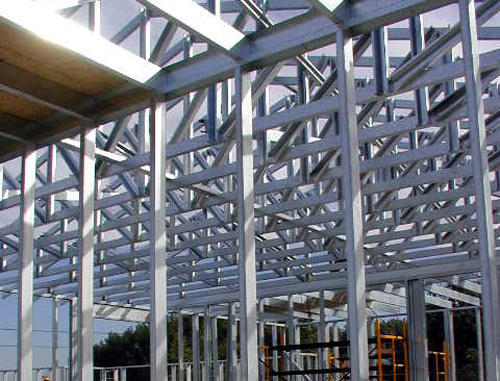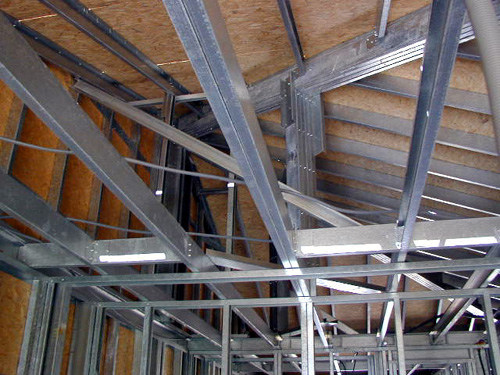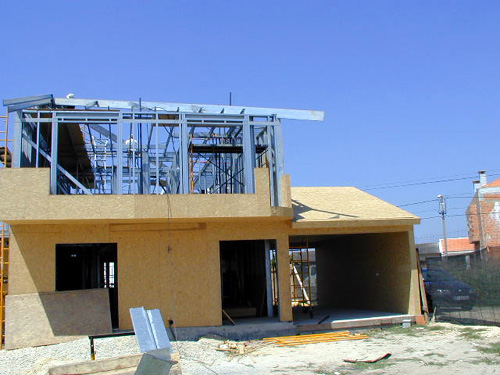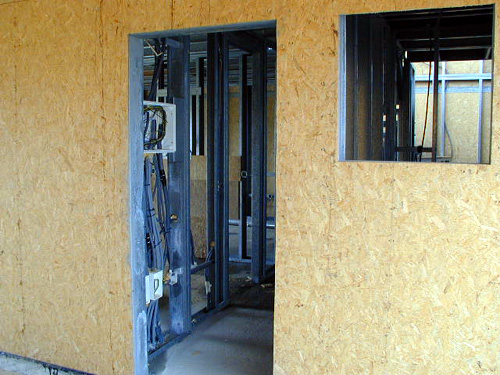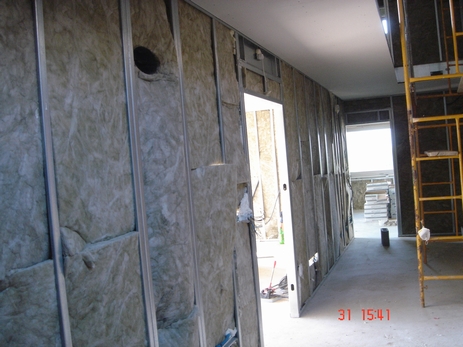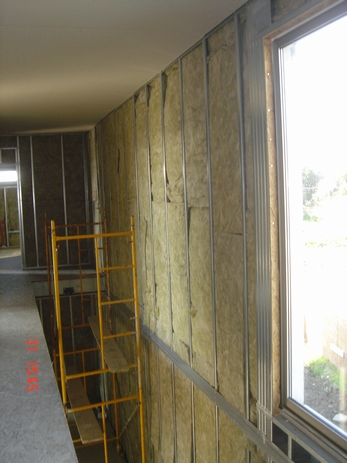Steel
The Light Steel Framing system offers a true alternative to the traditional construction methods which generally use materials that lead to problems with insulation, execution time and deficient planning.
Steel has been conquering its space as the most wanted material for construction all over the world, reducing dramatically the execution time and allowing for much higher levels of comfort and leak tightness.
As light gauge steel if very light, it frees the mind of architects and engineers, offering almost no restrictions to the suppression of pillars and wider spans, giving birth to versatile and dynamic structures where the walls themselves support the loads of the building.
In addition, the 100% recyclable quality of this material is unsurpassable.
|
|
|
OSB - Oriented strand board
The oriented strand boards have its origins in fast growing trees. The use of complementary materials together with pressure and heat processes where the wood particles are crossed and entangled in successive layers result in boards with an extraordinary structural resistance.
The millions of boards sold annually in the United States and Canada are a proof of their efficiency. In Light Steel Framing constructions the oriented strand boards cover all the structure of the building, providing consistency and acting as thermal protection material with high fire and water resistance.
Once again, Gestedi works with environment-friendly products. The fast growing and self-regenerating quality of beach and maritime pine woods decrease substantially the ecological costs of the process.
|
|
|
Gypsum / plasterboards
The use of plasterboards is not new and is currently well known in construction. The advantages of their physical and mechanical properties towards other materials are also broadly recognized.
The interior of Light Steel Framing constructions it totally covered with plasterboards and water-proof plasterboards in areas subject to humidity. Gypsum is also efficient against fire. Its non-combustible characteristic avoids thermal shock and heat transmission, deterring fire spread and structure expansion. Its porous surface and high level of elasticity offer acoustic insulating properties. Also, its thermal advantages are notorious: it retains heat avoiding energy wastes while simultaneously absorbing the excess of humidity in the air, returning it to the environment at the right moment.
This environmental balance is responsible for the absence of funguses which frequently appear on walls of houses with no adequate thermal materials.
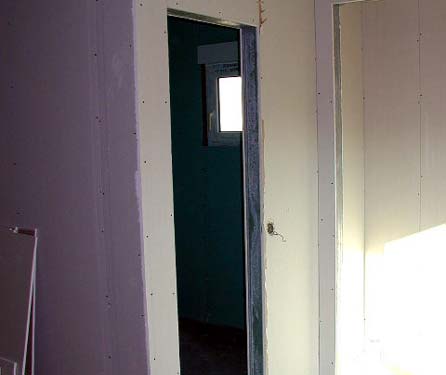
E.I.F.S. (External Insulation and Finishing Systems)
Our houses are normally covered outside with this system. E.I.F.S. is a thermal and acoustic insulating method which consists of fixing expanded polystyrene plates to the material which covers the steel structure. The plates, after a proper coverage with a special cello tape, are reinforced with glass fiber mesh immersed in the coverage. The surface is then covered with a plastic dense continuous finishing, colored and textured, conferring protection and beauty. With a fast and easy application, it removes thermal bridges and water leaking, reaching exceptional thermal and acoustic levels of insulation.
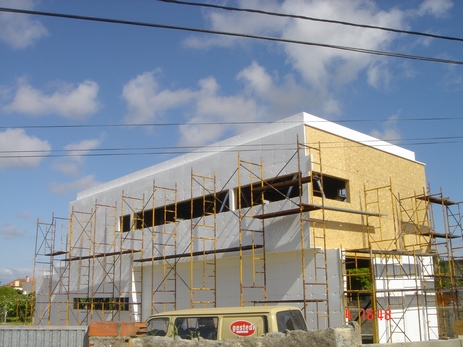
Rock wool
As a plate or blanket, rock wool derives from volcanic mineral fibers. It does not retain water since it has a non-capillary structure. Besides, changes due to condensation are zero. Rock wool offers excellent levels of thermal and acoustic insulation, it is non-combustible, has no smell and lasts forever.
|
|
|

